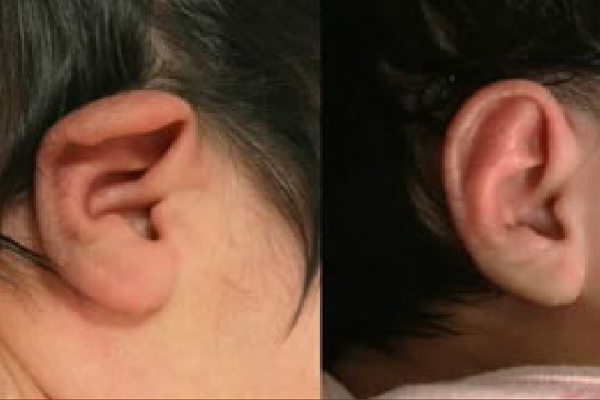Ear deformity correction
Ear deformities, such as microtia, prominent ears, or asymmetrical ears, can impact a person’s appearance and self-confidence. Ear deformity correction is a cosmetic or reconstructive procedure designed to correct or reshape the ears for a more natural and balanced look.
Types of Ear Deformity Correction
- Prominent Ear Correction (Otoplasty)
- Surgical correction of ears that stick out too far from the head.
- Microtia Reconstruction
- Reconstructing a small or underdeveloped ear, often using cartilage or prosthetics.
- Ear Asymmetry Correction
- Adjusting ear size, shape, or positioning to correct asymmetrical ears.
Benefits of Ear Deformity Correction
- Improves the shape, size, and position of deformed ears.
- Enhances facial symmetry and boosts self-confidence.
- Corrects prominent ears, microtia, or asymmetrical ears.
- Provides both cosmetic and functional improvements, especially in severe cases.
Procedure Overview
1. Prominent Ear Correction (Otoplasty)
- Anesthesia: Local anesthesia with sedation or general anesthesia, depending on the patient’s age and preference.
- Incision:
- Behind the ear or within the ear crease (invisible scarring).
- Correction:
- Adjusting the cartilage to reduce prominence or reshape the ear for better positioning.
- Suture techniques are used to set the ears closer to the head or reshape the ear structure.
2. Microtia Reconstruction
- Initial Consultation:
- Assessment of ear size and structure.
- Cartilage Grafting:
- Harvested from other parts of the body (e.g., rib cartilage) or synthetic materials used.
- Placement:
- Ear is sculpted and reconstructed in stages for a more natural look.
3. Ear Asymmetry Correction
- Surgical Adjustment:
- Small incisions are made to reshape or resize the ear, often combined with other corrective techniques.
Recovery Process
-
Prominent Ear Correction (Otoplasty):
- Swelling and discomfort for 1-2 weeks.
- Headband or dressing worn for the first few days to ensure proper healing and ear positioning.
- Final results visible after several weeks as swelling subsides.
-
Microtia Reconstruction:
- Multiple stages of reconstruction, with healing periods between each stage.
- Full results seen after 6-12 months as cartilage and tissues integrate.
-
Ear Asymmetry Correction:
- Recovery takes 1-2 weeks with minimal downtime.
- Scarring is minimal and fades over time.
Ideal Candidates
- Individuals with prominent ears desiring correction.
- Those with microtia or underdeveloped ears seeking reconstruction.
- Individuals with asymmetrical ears desiring correction.
- Healthy individuals with realistic expectations for ear improvement.
Risks and Complications
- Prominent Ear Correction:
- Minor scarring that fades over time.
- Risk of asymmetry or uneven results (rare).
- Microtia Reconstruction:
- Multiple surgeries and longer recovery period.
- Potential for cartilage resorption or prosthetic issues.
- Ear Asymmetry Correction:
- Mild discomfort and swelling, with minimal risk of complications.
Cost Factors
- Surgeon’s expertise and location.
- Complexity of ear deformity correction.
- Additional costs for anesthesia, follow-ups, and aftercare.



